#permaculture scotland
Text
Case Study: Scotland Permaculture Design for Flooding Mitigation
Often in permaculture design, we encounter issues with water. In any areas and on many specific sites, a shortage of water is the challenge. But on occasion, we may find that the challenge we need to address is not too little water, but too much. In some regions, we are not faced with increasing drought but rather warmer and wetter conditions – and that can bring the risk of…

View On WordPress
#flood risk#flooding#flooding mitigation#land drains#permaculture#permaculture design#pond#rewilding#Scotland Permaculture design#Scottish permaculture#vegetated swales#wetland
0 notes
Text

Chapter 3. Economy
How will cities work?
Many people believe that an anarchist society might work in theory, but the modern world contains too many obstacles that prevent such a total liberation. Large cities are chief among these putative stumbling blocks. Industrial capitalist cities are a tangled mess of bureaucracies supposedly only kept running by the authorities. But the maintenance of a large city is not as mystifying as we are led to believe. Some of the biggest cities in the world are largely composed of self-organizing slums stretching for miles. Their quality of life leaves much to be desired, but they do show that cities do not simply collapse in the absence of experts.
Anarchists have some experience maintaining large cities; the solution seems to lie in maintenance workers taking over the organization of the infrastructure for which they are responsible, and neighborhoods forming assemblies so that nearly all other decisions can be made at a local level, where everyone can participate. It is probable that an anarchist revolution will be accompanied by a process of deurbanization as cities shrink to more manageable sizes. Many people will probably return to the land as industrial agriculture decreases or ceases, to be replaced by sustainable agriculture — or “permaculture” — which can support a higher population density in rural areas.
In such a period, it might be necessary to make new social arrangements in a hurry, but it won’t be the first time anarchists have made a town or city from scratch. In May 2003, as envoys of the eight leading world governments prepared for the “G8” summit in Evian, France, the anti-capitalist movement set up a series of connected villages to serve as a foundation for protest and an example of collective, anti-capitalist living; these took the name VAAAG (Village Alternatif, Anticapitalist et AntiGuerres). For the duration of the mobilization, thousands of people lived in these villages, organizing food, housing, childcare, debate forums, media, and legal services, and making decisions communally. The project was widely regarded as a success. The VAAAG also exhibited the dual form of organization suggested above. Specific “neighborhoods,” each with fewer than 200 people, organized around a community kitchen, while village-wide services — “inter-neighborhood collective spaces” such as the legal and medical space — were organized by those involved in providing those services. This experience was replicated during the 2005 mobilizations against the G8 in Scotland, and the 2007 mobilizations in northern Germany, when nearly six thousand people lived together in Camp Reddelich.
These protest villages had precedents in the German anti-nuclear movement of the previous generation. When the state wanted to build a massive nuclear waste storage complex at Gorleben in 1977, local farmers began to protest. In May 1980, five thousand people set up an encampment on the site, building a small city from trees cut for construction and naming their new home The Free Republic of Wendland. They issued their own passports, set up illegal radio shows and printed newspapers, and held common debates to decide how to run the camp and respond to police aggression. People shared food and did away with money in their daily lives. One month later, eight thousand police assaulted the protestors, who had decided to resist nonviolently. They were brutally beaten and cleared out. Subsequent manifestations of the antinuclear movement were less inclined to pacifism.[53]
In England, a yearly festival of travellers and hippies that converged at Stonehenge to mark the summer solstice became a major counter-cultural autonomous zone and an experiment in “collective anarchy.” Beginning in 1972, the Stonehenge Free Festival was a gathering that lasted for the month of June until the solstice. More than a music festival, it was a non-hierarchical space for the creation of music, art, and new relationships, as well as spiritual and psychedelic exploration. It became an essential ritual and social event in England’s growing traveller culture. By 1984, it drew 30,000 participants who created a self-organized village for the month. In the words of one participant, it was “Anarchy. And it worked.”[54] The Thatcher regime saw it as a threat; in 1985 they banned the 14th annual Stonehenge Free Festival, brutally attacking the several hundred people who came to set it up in an assault known as the Battle of the Beanfield.
These examples of impromptu camps are not as marginal as they might seem at first. Hundreds of millions of people throughout the world live in informally organized cities, sometimes called shantytowns or favelas, which are self-organizing, self-created, and self-sustaining. The social issues posed by these shantytowns are very complex. Millions of farmers are forced off their land yearly and have to move to the cities, where the peripheral shantytowns are the only place they can afford to settle; but a great many people also move to the city voluntarily to escape the more culturally rigid rural areas and build a new life. Many shantytowns are plagued by health problems caused by poor access to clean water, healthcare, and nutrition. However, many of these problems are peculiar to capitalism rather than the structure of the shantytowns, as the inhabitants are often ingenious in providing for themselves in spite of artificially limited resources.
Privatized electricity and water are generally too expensive, and even where these utilities are public the authorities often refuse to provide access to informal settlements. Shanty dwellers get around this problem by constructing their own wells and pirating electricity. Medical care is highly professionalized in capitalist societies and distributed in exchange for money rather than on the basis of need; consequently, there are rarely fully trained doctors in the shantytowns. But the folk medicine and healers that are present are often available on a basis of mutual aid. Access to food is also artificially limited, because small-scale horticulture for local consumption has been replaced by large-scale production of cash crops, depriving people throughout the Global South of diverse and affordable sources of local food. This problem is exacerbated in famine areas, because food aid from the US, in line with military and economic strategies, consists of imports rather than subsidies for local production. But within the settlements, available food is frequently shared rather than traded. An anthropologist estimated that in one informal settlement in Ghana people gave away almost one third of all their resources. This makes perfect sense. Police rarely have control of shantytowns, and some armed force is required to uphold an unequal distribution of resources. In other words, those who hoard resources are likely to be robbed. With few resources, little security, and no guarantees of property rights, people can live better by giving away a large portion of whatever resources they come across. Gift-giving increases their social wealth: friendships and other relationships that create a safety network which cannot be stolen.
In addition to mutual aid, the anarchist objectives of decentralization, voluntary association, hands-on production rather than professionalization of skills and services, and direct democracy are guiding principles in many shantytowns. It is also important to note that, in an era of growing environmental devastation, shantytown dwellers subside on just a fraction of a percent of the resources consumed by suburbanites and formal city dwellers. Some may even have a negative ecological footprint, in that they recycle more waste than they generate.[55] In a world without capitalism, informal settlements would have the potential to be much healthier places. Even today, they disprove the capitalist myths that cities can only be held together by experts and central organization, and that people can only live at today’s population levels by continuing to surrender our lives to the control of authorities.
One inspiring example of an informal city is El Alto, Bolivia. El Alto sits on the Altiplano, the plateau overlooking La Paz, the capital. A few decades ago El Alto was just a small town, but as global economic changes caused the shutting down of mines and small farms, huge numbers of people came here. Unable to reside in La Paz, they built settlements up on the plateau, changing the town into a major urban area with 850,000 residents. Seventy percent of the people who have jobs here make their living through family businesses in an informal economy. Land use is unregulated, and the state provides little or no infrastructure: most neighborhoods do not have paved roads, garbage removal services, or indoor plumbing, 75% of the population lacks basic health care, and 40% are illiterate.[56] Faced with this situation, the residents of the informal city took their self-organization to the next step, by creating neighborhood councils, or juntas. The first juntas in El Alto go back to the ‘50s. In 1979 these juntas started to coordinate through a new organization, the Federation of Neighborhood Councils, FEJUVE. Now there are nearly 600 juntas in El Alto. The juntas allow neighbors to pool resources to create and maintain necessary infrastructure, like schools, parks, and basic utilities. They also mediate disputes and levy sanctions in cases of conflict and social harm. The federation, FEJUVE, pools the resources of the juntas to coordinate protests and blockades and constitute the slum dwellers as a social force. In just the first five years of the new millennium, FEJUVE took a lead role in establishing a public university in El Alto, blocking new municipal taxes, and deprivatizing the water services. FEJUVE also was instrumental in the popular movement that forced the government to nationalize the natural gas resources.
Each junta typically contains at least 200 people and meets every month, making general decisions through public discussion and consensus. They also elect a committee which meets more frequently and has an administrative role. Political party leaders, merchants, real estate speculators, and those who collaborated with the dictatorship are not allowed to be committee delegates. More men than women sit on these committees; however a greater percentage of women take on leadership roles in FEJUVE than in other Bolivian popular organizations.
Parallel to the organization in neighborhood councils is the organization of infrastructure and economic activity in unions or syndicates. The street vendors and transportation workers, for example, self-organize in their own base unions.
Both the neighborhood councils and their counterparts in the informal economy are patterned after the traditional communitarian organization of rural indigenous communities (ayllu) in terms of territoriality, structure and organizational principles. They also reflect the traditions of radical miners’ unions, which for decades led Bolivia’s militant labor movement. Fusing these experiences, El Alto’s migrants have reproduced, transplanted and adapted their communities of origin to facilitate survival in a hostile urban environment. [...]Through the neighborhood juntas, El Alto has developed as a self-constructed city run by a network of micro-governments [57] independent of the state. In Raúl Zibechi’s view, the autonomous organization of labor in the informal sector, based on productivity and family ties instead of the hierarchical boss-worker relationship, reinforces this sense of empowerment: Citizens can self-manage and control their own environment [58]
Horizontal networks “without traditional leadership” also play a major role complementary to these formal structures in both the organization of daily life and the coordination of protest, blockades, and struggle against the state.
Now that Bolivia has an indigenous president and progressive government led by MAS, the Movement Towards Socialism, FEJUVE faces the danger of incorporation and recuperation that typically neutralizes horizontal movements without explicitly anti-state goals and means. However, while supporting Evo Morales’ reversals of neoliberal policy, as of this writing FEJUVE remains critical of MAS and the government, and it remains to be seen to what extent they will be recuperated.
In South Africa, there are many other examples of informal urban settlements that organizes themselves to create a better life and struggle against capitalism. Specific movements of shack dwellers in South Africa are often born out of moments of violent resistance that take on an extended life as people who met in the streets to stop an eviction or a water shut-off continue to meet in order to create structures for home care for the sick, fire watch, security patrols, burial services, education, gardens, sewing collectives, and food distribution. This was the case with the movement Abahlali base Mjondolo, which arose in 2005 out of a road blockade to stop the eviction of the settlement to make way for development in preparation for the 2010 World Cup.
The Symphony Way settlement of Capetown is a squatted community of 127 families who had been forcibly evicted from their previous home by the government, which is trying to meet its 2020 target under the Millennium Development Goals to eradicate all slums. The government relocated some of the evictees in a tent camp surrounded by armed guards and razor wire, and the rest in the Transit Relocation Areas, described by one resident as “a lost place in hell” with high crime and frequent rape of children.[59]
Refusing to negotiate with the highly distrusted political parties or to live in either of the officially provided hell holes, the Symphony Way families decided to illegally occupy an area along a road to set up their community. They organize their community with mass assemblies in which everyone participates, as well as a high degree of individual initiative. For example, Raise, a nurse who lives in Symphony Way, volunteers as a teacher within the community center, helps organize a girl’s netball team, a boy’s soccer team, a drum band, a children’s daycamp during holidays, and assists in childbirth. Children are very important within the settlement, and they have their own committee to discuss the problems they are confronted with. “In the committee we solve our everyday problems, when children fight or something. We come together and talk. There are children from other settlements, not only from this road,” explains one member of the committee. The community is multiracial and multireligious, including Rastafarians, Muslims, and Christians, who work together to foster a culture of respect among the different groups. The settlement has a night-watch to discourage antisocial crime and put out unattended fires. The residents told a visiting Russian anarchist that they felt much safer in their community than they would in one of the camps offered by the government, where crime is rampant, because at Symphony Way the community worked together to protect itself. “When someone is in trouble everyone is here,” explained Raise. The sense of community is one reason why the squatters do not want to move to a government camp, despite the threat of police violence, and even though in the tent camp the government provides food and water for free. “The community is strong and we made it strong, living and working together, but we didn’t know each other when we first came here. This year and a half made us all a big family.”
There are thousands of examples of people creating cities, living at high population density, and meeting their basic needs with scant resources, with mutual aid and direct action. But what about the bigger picture? How would densely populated cities feed themselves without subjugating or exploiting the surrounding countryside? It may be that the subjugation of rural areas by cities played a role in the emergence of the state thousands of years ago. But cities do not have to be as unsustainable as they are now. The 19th century anarchist Peter Kropotkin wrote about a phenomenon that suggested interesting possibilities for anarchist cities. Urban gardeners in and immediately around Paris supplied most of the city’s vegetables via intensive agriculture supported by plentiful manure from the city, as well as industrial products, such as glass for greenhouses, that was too costly for farmers in rural areas. These suburban gardeners lived close enough to the city that they could come in every week to sell their produce at market. The spontaneous development of this system of gardening was one of Kropotkin’s inspirations in writing about anarchist cities.
In Cuba, centralized industrial agriculture collapsed after the fall of the Soviet Bloc, which had been Cuba’s main supplier of petroleum and machinery. The subsequent tightening of the US embargo only exacerbated the situation. The average Cuban lost 20 pounds. Quickly, much of the country shifted to small-scale intensive urban agriculture. As of 2005, half of the fresh produce consumed by the 2 million residents of Havana was produced by about 22,000 urban gardeners within the city itself.[60] The Parisian example chronicled by Kropotkin shows that such shifts can also occur without state guidance.
#anti colonialism#anarchism#daily posts#communism#anti capitalist#anti capitalism#late stage capitalism#anarchy#anarchists#libraries#leftism#social issues#economy#economics#climate change#anarchy works
3 notes
·
View notes
Text
My cousin in Edinburgh sent me this he saw at the local organic food shop.
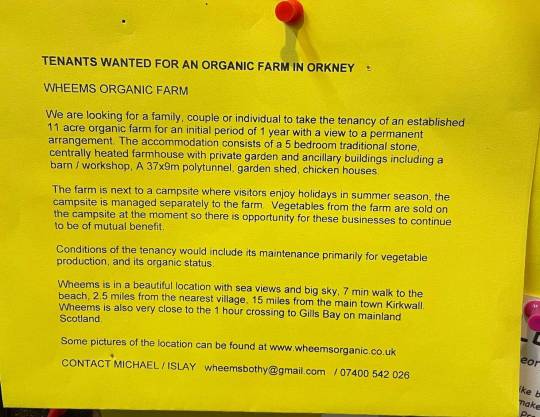
[Tenants wanted for organic farm in Orkney.
WHEEMS ORGANIC FARM
We are looking for a family, couple or individual to take the tenancy of an established 11 acre organic farm for an initial period of 1 year with a view to a permanent arrangement. The accommodation consists of a 5 bedroom traditional stone centrally heated farmhouse with a private garden and ancillary buildings including a barn/workshop. A 37×9m polytunnel, garden shed, chicken houses.
The farm is next to a campsite where visitors enjoy holidays in the summer season, the campsite is managed separately to the farm. Vegetables from the farm are sold on the campsite at the moment so there is opportunity for these businesses to continue to be of mutual benefit.
Conditions of the tenancy would include its maintenance primarily for vegetable production, and it's organic status.
Wheems is in a beautiful location with sea views and big sky. 7 min walk to the beach, 2.5 miles from the nearest village, 15 miles from the main town Kirkwall. Wheems is also very close to the 1 hour crossing to mainland Scotland.
Some pictures of the location can be found at www.wheemsorganic.co.uk
CONTACT MICHAEL / ISLAY
07400542026]
39 notes
·
View notes
Photo

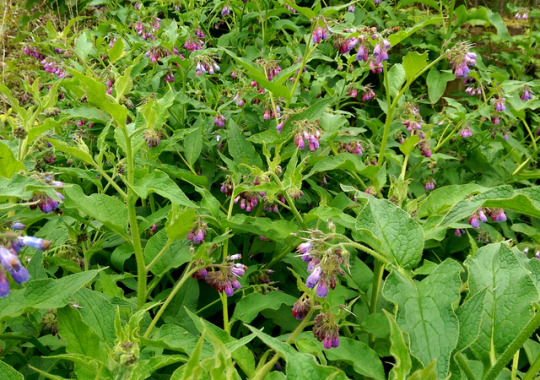

Symphytum asperum, Boraginaceae
If you are interested in attracting more pollinators to your garden, especially bumblebees, grow some comfrey, rough comfrey in the case of these pictures. In the few minutes I spent around this colony growing along the river Clyde I took a dozen shots of different bumblebees (of which these were the best as I should ditch my phone and switch to a decent camera). No other group of plants in bloom in the surrounding area was experiencing the same amount of insect activity.
Aside from being clearly beneficial to the bees, comfrey - a number of species within the Symphytum genus - has also been used as an edible plant (which can cause damage to the liver over time so I wouldn’t really use it that way) and as a dynamic accumulator. The latter expression means that comfrey is one of those plants which send down a deep and robust set of taproots and gather nutrients in the leaves. This phenomenon is useful in two ways: as the root system draws water and nutrients upwards, nearby plants get to enjoy the effects of capillarity, at least to a certain extent depending on their distance, while the large leaves can be periodically harvested throughout the growing season to be added to the compost box or turned into liquid fertiliser.
Comfrey is often mentioned in permaculture design, and generally positioned below the drip line of orchard trees, where its qualities are most useful.
#symphytum#symphytum asperum#boraginaceae#comfrey#rough comfrey#wildflowers#bumblebees#pollinators#dynamic accumulators#natural fertiliser#permaculture design#botany#plant identification#plant photography#plantbr#gardeners on tumblr#scotland#spring
171 notes
·
View notes
Text

A post on coppices and pollards and how they can turn trees into powerful carbon-pumps.
#ClimateHope: Walking around old managed landscapes, you might come across trees like these–many thin trunks coming out of little stumps, or tall trees with knobby tops with a lot of small branchings popping up. These are #coppices & #pollards– they are VERY interesting. 1/?
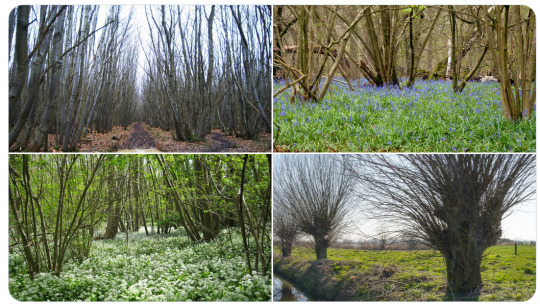
See 4 images here
They meet many needs: they grow a lot of thin poles of wood for many uses, build huge roots masses, can fit between other trees, take advantage of the fast early growth of some hardwood trees, and can sequester carbon quickly.
One can go all over the world & see this kind of relationship between people & their re-growing trees; people have done this everywhere. it’s a kind of relationship to the earth that is symbiotic & worth reconnecting with.
The concept is simple, many trees all over the world don't live very long once they get big, but when they are browsed by animals, they stay young & can live for a long time. When we coppice or pollard, we cut trees back on a regular schedule. pic from http://midwestpermaculture.com/2012/11/coppicingpollarding/
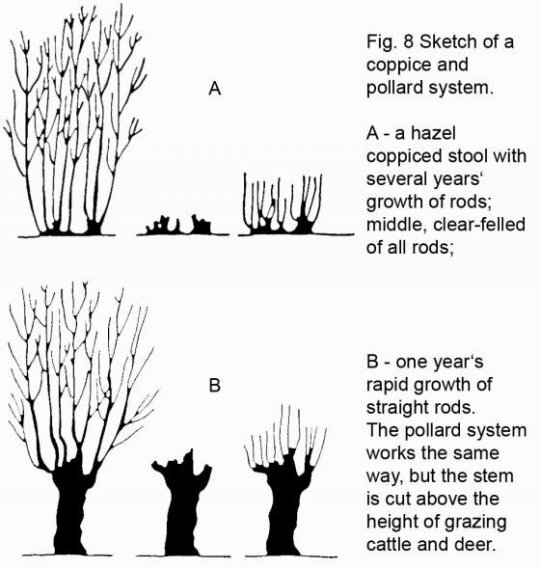
when they are taking to a stop, they dump carbon into the soil and feed their team of microorganism friends which help them feed on the materials they need to rejuvenate.
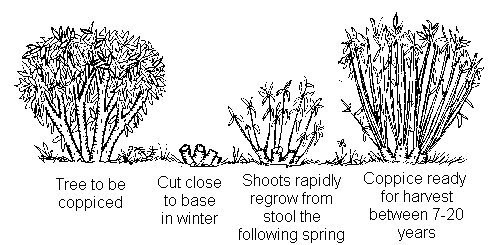
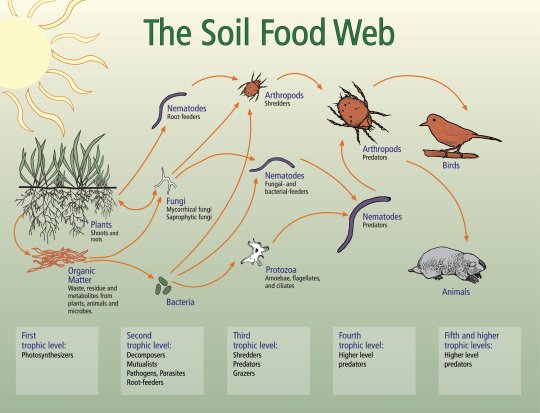
trees that don't always live vary long can become some of the oldest trees (where) there are are ancient coppices. pic from: http://bbc.in/1NvNeVF article: http://bit.ly/2QgisCP
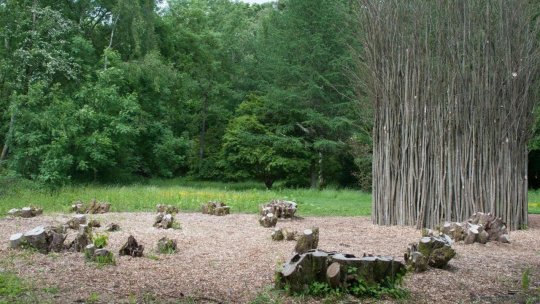
“The basic feature of a coppiced wood is taht it is cut periodically and the trees are allowed to regrow from the cut stumps, which are termed stools. The word coppice is derived from the French ‘couper’, meaning to cut. A Coppiced wood provides a self-renewing source of wood allowing an indefinite number of crops of stems to be taken. Coppiced trees can live to a great age. Some of the oldest trees in British woods are coppice stools which may be more than 1,000 years old. Traditionally a wood contains coppiced trees (underwood) and scattered timber trees (standards). In an actively coppiced wood an area of the underwood is cut each winter. The names given to such an area of felled coppice differ from one part of England to another, but they include (X), fell, coupe, sale and burrow, while in Scotland and northern England the term is hagg. Within a single wood, coppicing usually gives rise to an irregular patchwork of panels and different stages of growth. Panels typically range in size from half to three hectares. Occasionally, coppicing is conducted in a more regular fashion, with an equal0sized area being cut each year, or even with the entire wood being coppiced at intervals.
-Transcribed from Image (LINK)
it's weird, pollarding has been a part of gardens where people just like to look like they are English lords and it can be done just for appearance. the purpose is to have pollards that are out of reach of animals and livestock.
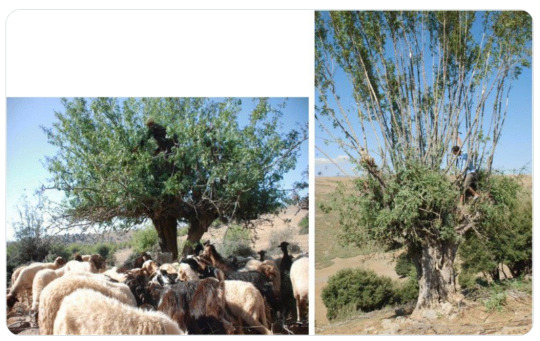
(2 images linked here)
Having found the power of these amazing trees, we can also point into the direction of how so many cultures also see this as a sacred cycle of death & renewal. There are traditions all over of the World Tree that is coppiced at the end of time ®rows. For ex, from the Norse: 8/
An ash I know, | Yggdrasil its name,
With water white | is the grat tree wet;
Thence come the dews | that fall in the dales,
Green by Urth’s well | does it ever grow
Thence come the maidens | mighty in wisdom,
Three from the dwelling | down ‘neath the tree;
Uth is one named | Verthandi the next,-
On the wood they scored,- | and Skult the third.
Laws they made there, and life allotted
To the sons of men, and set their fates.
-- Völuspá stanzas 19 & 20
(See 2 more images here)
But so many cultures understand how to renew the plants and land in their lives and they connect then with the large cycles of renewal, the potential that things could lead from ego to world chaos, and the ability to be part of the dance of being a part of maturity with nature
How then do we bring back lessons? What can be done in the world with reconnecting with this knowledge?
Well, one thing we get is very straight poles, whips, sticks of whatever size we manage for. Baskets, tool handles, chairs, houses, fuel, charcoal, (some pictures from the amazing Ben Law)

but unlike some forestry, you are not just taking and leaving destruction in your wake, you are leaving living roots in living soil. You are keeping the integraty of relationship.
@DaveJacke is working on a coppice book & has returned w/ many important examples. Turns out species used for Christmas Trees are coppicable, so someone doing this kind of management can sell the trees, fund their project, then cellect them for other uses.
Unbroken Circle posted by DaveJackie to youtube.
“Christmas trees can resprout after cutting! This farm in Massachusetts has cut multiple Christmas trees off the same seedlings they planted 50 years ago...”
And, returning to our homes, communities, neighborhoods, towns, I bet we could turn a lot of our streets, parking strips, highways, yards, parks, campuses, &c towards this amazing tactic for building a lot of carbon-rich wood fast for many uses.
So thanks for coming along, we can work on this together, to coppice the plants we already have, to plant more, to shift to living with the carbon-flows of the biosphere, to change ourselves in the process& to engage directly with restoring the balance of the atmosphere.
And I wonder, as you go about your daily life if you see some trees that might be coppiced, do they already grow with that pattern? what would it mean to turn our places into carbon pumps? where could you and your community reconnect with the vegetation right around you?’
here is an informative talk by @davejacke again though it is not the best sound and picture quality
Coppice Agroforestry with Dave Jacke on youtube
“A presentation by Dave Jacke, co-author of Edible Forest Gardening, on Coppice Agroforestry. Recored at NH Permaculture Gathering Aug 23, 2014″
oh and here is his website that i think will eventually lead to the book when it's finished: http://coppiceagroforestry.com there is a good blog as part of it too
4 notes
·
View notes
Text
Recommendation Round Up {for April}

{cover of Lugh na Bua/Lugh the Deliverer, artwork by Sean Fitzgerald}
This is a new installment on the blog that I hope to keep up with on a monthly basis where I share different media and events that I come across that I think might be of interest to other Gaelic Polytheists. There is quite a bit for the month of April, so I hope that you all enjoy.
First up is a video from Lora O'Brien’s Youtube channel that some folks might find helpful:
youtube
Very recently there were two books published that I can’t wait to add to my shelves! A Cottage and Three Acres is written by Colette O'Neill of a lovely blog called Bealtaine Cottage. The book is about Colette’s journey of taking a barren piece of land in Ireland and making it a little piece of paradise. The book can be purchased straight from the author If you are into Permaculture, gardening, sustainability or Irish folklore, you will love her blog, so check it out.
The second book is Lugh na Bua/Lugh the Deliverer written by Cathal Ó Searcaigh & Seán Ó Gaoithín and illustrated by the very talented Sean Fitzgerald. The book is described as “Two new tellings of a Donegal Folktale concerning the troublesome Balor and Lugh of the Tuatha Dé Danann”. The book can be purchased directly from the illustrator {for a limited time, until his 60 copies sell}, from the publisher or on Amazon. Make sure to check out Sean Fitzgerald’s blog too, which besides his artwork he shares beautiful photos of his garden and sacred sites in Ireland.
There have been a few really great posts from some of the blogs I regularly haunt.Cailleach’s Herbarium explores the fairy faith and animism in Scotland in their most recent post Who the Hell is Sidhe?, Anna from Sweet Delicate Thing writes about her findings and take about an Irish Goddess in Resurrecting the Irish Gods: Flidais, Morgan Daimler from Living Liminally sets some things straight in Misinformation and Truths About the Morrigan, and Jane Brideson of The Ever-Living Ones shares her adventure to a dolmen in Co. Roscommon, Ireland in Walking the Path of the Ancestors.
And finally, there are some upcoming events happening in my neck of the woods that I urge folks to go to if they happen to be in the area! From April 28th to 30th theIrish Language Immersion Weekend is going on here in Kingston Ontario Canada, which is by Comhaltas Ceoltóirí Éireann Harp of Tara/Kingston Branch. From May 12th-14th the Spring Rain Weekend is happening a wee bit further from me in Centre Wellington Ontario Canada, featuring Irish music, dance and language workshops.
74 notes
·
View notes
Text
I'm ACTUALLY doing it! I'm quitting ALL of academia to get a DIPLOMA in PERMACULTURE AND RESILIENT ECOSYSTEMS and going to build a FARM in SCOTLAND where I can have a plant nursery, flower shop, and RAISE ALPACAS FOR THEIR SOFT WOOL
I'm literally quitting academia to be a farmer so I can be out standing in my field!!!!!!!!
7 notes
·
View notes
Photo
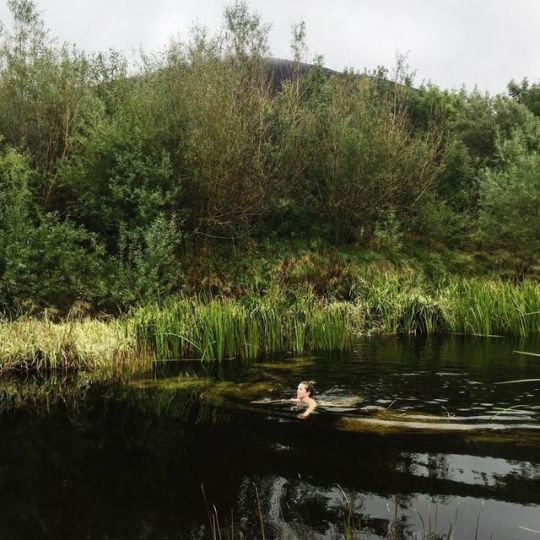
rosabevan
James caught me here on my morning pond swim. I’ve been cold water swimming for the past month and it’s one of the best things I’ve decided to do - thank you @lucyreid73 for getting me into the pond with you when you were here! I’m making slightly less funny noises and my body goes slightly less numb than when I first started so here’s hoping I can carry on until the ice stops me! 🥶
#coldwaterswimming#wildswimming
#scotland#highlands
#morningswim#vimhoffmethod
#pond#coldwater
#permaculture#nature#beauty
#skinnydipping
33 notes
·
View notes
Note
I don't remember if I sent you one of these yesterday, so...: 7: Have tattoos? 8: Want any tattoos? 11: Best friend? 17: Someone you miss 25: My idea of a perfect date 36: Where I would like to live 38: My childhood career choice 42: The last thing I ate
7: Yeah! ive got a :3 tattoo on my inner forearm and a venus symbol on my right thigh
8: a whole bunch, id like to get a labrys somewhere and at some point a bigger piece done by someone who knows what theyre doing!
11: my girlfriend, @lesboheresy !! shes very lovely
17: never thought id say this but my mum! ive not seen her in a while
25: theres two that spring to mind, one’s exploring a city at night n sleeping on a rooftop underneath the stars + not having anything bad happen to me, the other one is mushroom picking in a forest with like a picnic or something involved!
36: ok so ideally woods cabin in like scotland or maybe somewhere in germany, with a nice permaculture thingy going on, idk id like to take part in a land project somewhere but i dont rlly kno anyone whod be doing smth like that. if im doomed to city life however a studio apartment would be nice
38: ive never really had one! i guess at 14 i wanted to be an artist, at 8ish i wanted to be an astronaut but thats abt it. (maybe i wanted to be a writer at one point too)
42: a really nice falafel burger at a strange empty restaurant that had the anarchy symbol painted on the wall and didn’t serve normal, good mustard but dijon
tysm for sending!!!!!!!!!!!!!!!!!!!
8 notes
·
View notes
Photo





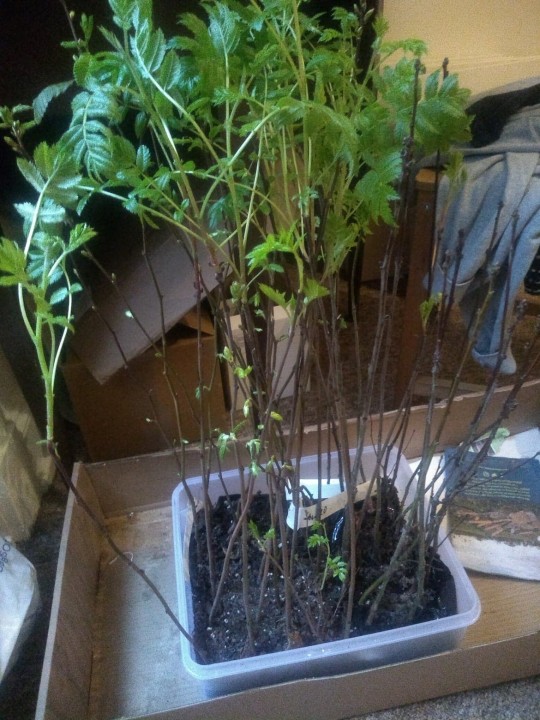
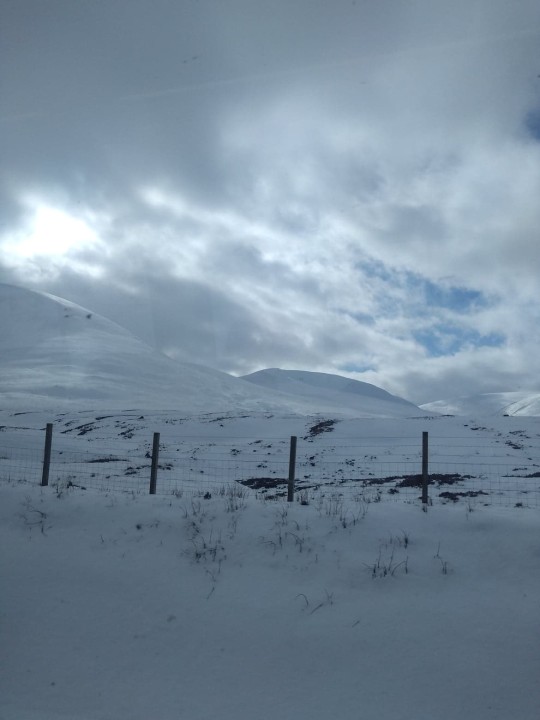
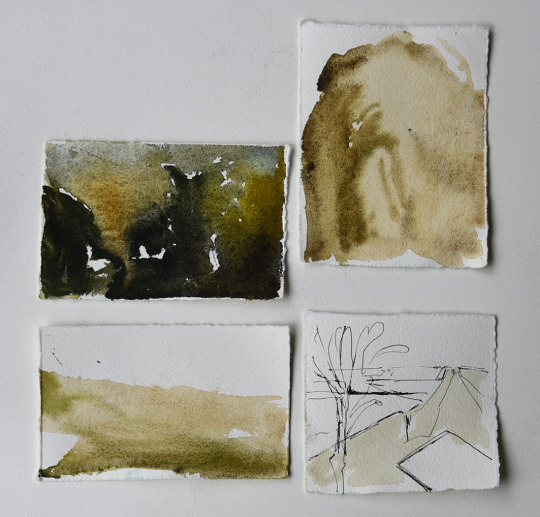
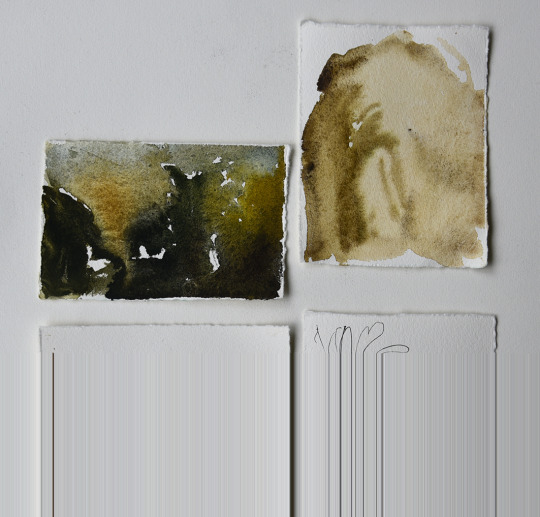
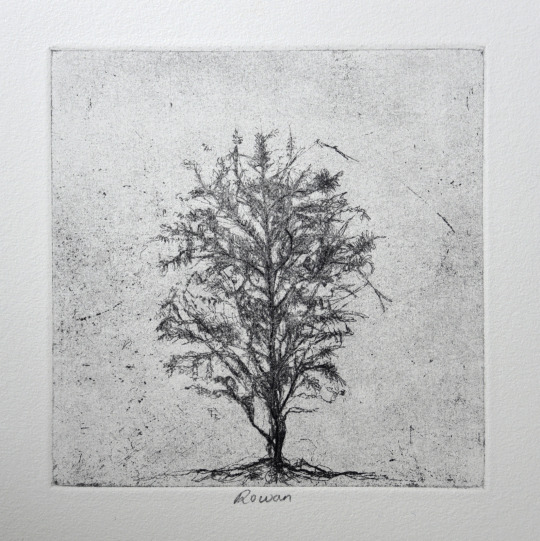
Flora Robson
Painting and Printmaking
Autumn
There is tree at the bottom of my garden which has fascinated me for the past 22 years. I have grown up watching this sycamore (of the Acer Brilliantissimum variety) lose its foliage each year, it’s salmon pink leaves turning yellow to green to a gorgeous emerald by summer. This hardy tree holds this parade of colour every year, living and breathing amongst its herbacious peers. It’s interesting how attached you can become to something as simple as a tree standing at the end of your lawn, the assurance that comes with knowing that as each summer arrives, so will the abundance of fresh array of green leaves, it is rooted, a constant in the ever changing tides of the everyday. For my final year, trees therefore were at the forefront of my mind, in particular Scots Pines- from charcoal plein-eir sketching in Mull, Loch Lomond and Kintyre, to the etching room, where in October I began some experimentation with Photech. There are some etchings I made in october.
Having decided to focus my paintings on the Scottish Landscape for my final year project, I started researching into the Scots Pine, and the history of this tree in Scotland’s landscape. It is known as a pioneer species, due to its ability to regenerate in poor soils, a native of the once vast Caledonian Forest (a title deriving from the Latin ‘wooded heights’.) At the start of the Holocene, Scotland was covered with substantial ice sheet with little vegetation. When this ice retreated, records of pollen preserved in peat bogs have shown that the land was rapidly colonized by Birch, Scots Pine, Hazel and Oak. Over the next 11,000 years human settlement and agriculture practices brought about variation in tree cover. Pollen records show a sharp decline in the extent of the Caledonian Forest over the past 400 years, due to the age of vast clearances of trees on land (Scottish Clearances) as well as natural changes in climate and volcanic activity. With the collapse of many ‘fermtoun’ settlements after the Jacobite rebellion in 1745, there was a huge dip in the regeneration of forests in upland areas, and subsequently a huge loss in biodiversity. In addition to the rise of monoculture farming, the combination of both world wars had a huge effect on the amount of timber left in Britain. The sitka spruce was introduced to create dense plantations for wildlife but only supported a small range compared to the native woodland which was being felled. Such large-scale ecologcail destruction to the Caledonian Forest has resulted in a complete transformation of the woodlands, with only 1% of the native pinewoods remaining, with large habitats suffering at the cost.
In October, I attended a curators workshop at the CCA titled ‘Being Ecological’, led by Artist Kotryna Ula Kiliulyte and A+E collective, discussing the work ‘Being Ecological’ by Timothy Morton, which gives readers an insight into a more genuine and real approach to handling ecological knowledge, how we are all part of the biosphere, and how we interact with ecological health can have a huge impact on our mental health, how ‘teaming-up’ with the non-human elements surrounding us can help us move forward in combating the effects of climate change, and deconstructing the western colonial narrative surrounding land use.
I then spoke to John Thorne, who himself mentioned a tree he remembers from his childhood garden, and how he remembers observing it from a young age how important is remains to him. The emotional response to trees and landscape in general is one that interests me, with my paintings being driven by this connection to a certain view. It’s interesting how tree-planting on even a small scale can be an act of legacy making, in a similar way to traditional landscape painting. Landscape is so transient, so fleeting, and trying to solidify this feeling into a painting seems impossible, it is an attempt at something permanent, a part of the landscape to grasp onto.
I began to research into organisations that offer wood packs to schools, universities and individuals who are interested in tree replantation, in the hope that I could make an active impact on the environment within the GSA community, whether that be around the STOW college building, on Garnethill or further afield at the GSA Highlands and Islands Campus. John put me in contact with FROGGS (friends of Garnethill community) who were hugely helpful in discussing the process of ordering tree packs and regenerating the area of land next to the Margaret Macdonald halls of residence, as well as their involvement with the Council in making Glasgow greener.
Having decided to base the planting project at the GSA Highlands and Islands Campus, I was able to look at the host and trees and wildlife already abundant in the region of the Forres estate. This project would also help me provide links between the Glasgow Campus and the students studying in Forres, in the hope that there can be future sustainable projects and a sharing of resources and space between both campuses. The Woodlands Trust Scotland campaign works to plant and halt the loss of native woods and trees, restoring woodland to peak condition. Having ordered my ‘working wood pack’ from the Woodlands Trust, a mix of Hornbeam, Pedunculate Oak and Rowan, I headed up to Forres to visit the campus and discuss the project with Sir Alistair Gordon-Cummings, the landowner of the Forres estate.
On Wednesday 30th October, I got the train to Forres, a five hour journey which took me the snow capped hills of Aviemore, through the Caledonian Forest. Driving up the lane to the Forres Estate Office was breathtaking, the October light leaking through the gaps in the pines.
Planting was discussed we opted for March, as the harsh conditions in the winter months are too limiting for growth. It was fascinating to talk to Sir Alistair, how the land at Forres has a strong ecological function in terms of having a positive social and ecological impact on the existing woodland and wildlife, as well as promoting future sustainable ways of farming and planting. The estate has over 7000 acres of sustainable woodland and this provides and exceptional resource for biomass, with facilities put in place for converting their timber into chipping. In 2015, renewable energy was provided to the GSA campus, with the introduction of the Berryburn Wind Farm, commissioned in 2014.
It was important to Sir Alistair that my intentions were clear, whether the site was to be an ‘open’ or closed space, an exhibition or an ecological protest. It is hard to draw a conclusion as to what this space will become, there are a lot of uncertainties surrounding planting, i am unsure that these saplings will survive the cold biting winter months of 2020, perhaps a herd of confident deer will chew the saplings up. I asked Sir Alistair a series of questions, and just as I began he placed a small object on his desk. A root of a Scots Pine from 3000 years ago, from Rochlin. A phenomenon, sitting next to his teacup.
I asked him, ‘In terms of History of Farming at Forres, how do you manage the traditional patterns in terms of the future of the land and the soil?
We have just embarked on a new type of farming called ‘holistic’. We are converting the farm froma traditional style of managing the farm to this new form. Well, it’s not really new, just in terms of perception. It involves organic matter and the soil. What we are hoping to achieve in the next 7-10 years is a transformation of the soil, allowing it to grow in a way we want it to. You start by taking soil samples, and from there you find percentages of organic matter that you have at the minute, and then you ‘ween’ the soil so no fertiliser no spraying no direct drilling. This will hopefully mean my yields of corn be higher, the health of the invertebrates will improve, the birds the bees, there will be a general improvement overall. It seems all thoroughly sensible to me.
I then went on to ask,
‘In terms of the history of trees here, can you tell me a bit about them?'
Trees have been here for hundreds of years and essentially what one does with trees is replace what one has before. So for me I find the tree business the biggest in terms of land mass. We grow all the traditional types, I think we are over 50% Scots Pine. It used to be 70% but now it’s 50. Sitcus spruce, lodgeball pine and more and more lark which I like. We have a wonderful bank of stuff, of all shapes and sizes which gives the estate a wonderful autumnul feel. It has always been like that, and I don’t feel any need to re-invent the wheel. And they bring new species to you and sometimes you say fine but sometimes you don’t. That’s part of everyday life.
In terms of coppicing, is it an industrial method you use?
To me it’s quite suburban, when I was born here there were a lot of foresters, and they used to coppice, I call it prune, to make soil logs. But now they don’t because we haven’t got the time or money. So coppicing isn’t a thing we get hugely involved in, we prune hardwoods in normal fashion in order to get oak in 100 years.
I then went on to speak to Fergus Fullarton Pegg, a research associate who focuses on the impact of digital interface on creativity in remote and distributed communities. Last year he started to grow a permaculture garden- a space in which students and staff work cooperatively growing a variety of wild-flowers, vegetables and plants. Fergus is particularly interested in what he refers to as the ‘circular economy’ of textiles and plants and how this can be embedded in a dye garden next to the campus. Addressing the complexities of a sustainable future begins by the deconstruction of product ecology and our dependency on these products. He was interested in the tree planting project, as its intentions sit alongside this idea of sharing values of sustainability and looking to the future of a site and the produce we can garner from it. Fergus mentioned he had planted hedgerows around the permaculture garden and had to be experimental in terms of his tools for the indentation of the soil, switching to a metal pole as an alternative. In terms of the benefits of planting by the campus building, we spoke of the fact that the trees will soak up water (up to half a tonne a day) which will aid flooding, as well as decrease soil erosion. The trees could act as a social project for students studying at the innovation school to work with, as well as admire, with the neighboring crossbills, tree-creepers and red squirrels also hopefully benefiting! What is interesting is the mutability of this project, similarly to the importance of understanding the mutability of a landscape. It is irregular, its rough edges exist in order to have a non-hierarchical understanding of our position as humans in the biosphere.
Spring
Over the next few months I spent a huge amount of time in the etching workshop, creating a series of prints to illustrate each of the 45 saplings that I was going to plant on the Altyre estate, gathering keen volunteers and orchestrating a plant to get the train up to Forres for March 12th 2020.
Clutching two of Toby’s spades, Rebecca’s camera and tripod, plenty of layers and snacks for the journey-we caught the 10:10am train to Inverness from Glasgow Queen Street. As well as the 45 saplings as well as deer protectors which has been nestled in my room for the past week. Our arms were full to say the least.
As the train whistled once again through the hills, passing Perth, Aviemore and Nairn, it was alarmingly snowy. A moment of doubt crossed my mind, if there was snow on the ground these saplings would be off to a chilly start. But thankfully, Forres and Findhorn are known as having a micro climate, boasting a warm spring/summer due to the shelter of the western and northern highlands.
We were greeted at Altyre Office by David Clark, the resident Forester there. Along with his trusty dog, we hopped into the truck and drove up to the GSA Campus, the grey sky starting to descend. We began to plot the distance between each sapling, with a row of hornbeam at the front, followed by rowan and finally oak, 6 metres apart stretching across the edge of the field. Setting up at tripod in the corner of the field we managed to film the process from start to finish, just as the light was fading. The delicate sapling which had begun to flower were placed within the protectors, attached to wooden stakes. David mentioned how in summer they manage to plant thousands of trees each week, covering areas of the estate in new saplings with a team of helpers. Below are images of the final stage. My intention as an artist is only a small part of the process, the planting in a way a performance, a protest and an act of empathising with our environment. I look forward to visiting the site in the near future to see their growth. For my degree show I plan to show the etchings alongside the film of the process in real time. I am hugely grateful for Sir Alistair, David, Rebecca Gill, Toby Mills and the team at the GSA Highlands and Islands Campus for allowing me to embark on this planting, as well as of course the Woodlands Trust. I hope in future for future collaborations within the GSA community surrounding sustainability and the processes we can take in order to take the steps to a greener future.
0 notes
Video
#kittensofinstagram #catsofinstagram #cats #kittens #vintageforsaleuk #vintageforsale #teakdiningchairs #midcenturymodern #midcenturydesign #vintagediningchairs #chairporn #midcenturydining #midcenturyfurniture #veganeats #rawfooddiet #beardedcollies #beardies #permaculturedesign #edinburghvintage #edinburghartist #glasgowvintage #glasgowartists #glasgow #rockit #midcenturyfurniture #edinburghretro #edinburghartist #edinburghvintage #glasgowartist #glasgowretro #glasgowvintage #rawfooddiet #permaculture #interiordesign (at Vintage Voyeur Scotland)
#cats#glasgowvintage#interiordesign#vintagediningchairs#midcenturymodern#midcenturydining#midcenturyfurniture#edinburghvintage#kittens#permaculture#teakdiningchairs#glasgow#vintageforsale#rawfooddiet#glasgowretro#beardedcollies#veganeats#vintageforsaleuk#kittensofinstagram#chairporn#rockit#edinburghretro#glasgowartist#glasgowartists#beardies#edinburghartist#catsofinstagram#midcenturydesign#permaculturedesign
1 note
·
View note
Text
New Year Plans
Its been awhile since we posted here as we’ve been having a bit of a winter hibernate (although busy with lots of jobs) but now emerging with plans for the year. This is what we have so far:-
2017 High Level Plan
Permaculture design for site completed with implementation plan (to include orchard, meadow and chickens)
Permaculture Diploma started (plan pathway and ten designs linked with above)
Develop as ScotLAND Learner
Eco camping huts project continued and first hut up and running
Woodland management plan in place
House eco renovation continued (heating, energy, off grid plan, interior and exterior decorating, storage and space usage)
Business plan, ‘brand’ and products developed, website launched
Art plan
Continue and expand veg, fruit and salad growing and preserving
Continue and expand fermenting and brewing
Generate some income!
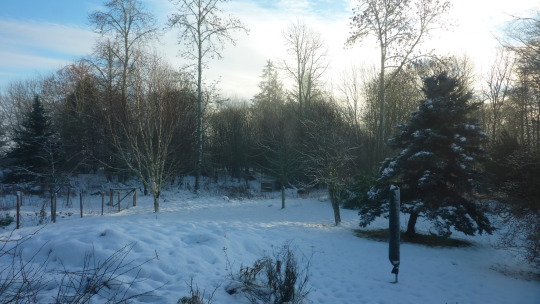
4 notes
·
View notes
Text
Where To Go In August: Best Holiday Destinations & Events In The UK
If you’ve not booked your summer holiday yet, how about an August event to inspire you? There are still plenty of holiday rentals with availability, so whether you want to go to a music festival in Wales or a food festival in Derbyshire, booking a place nearby these August events is a breeze.
Best UK Events In August
The British summertime is shaping up to be a scorcher this year, so who needs Greece or Spain when you can enjoy a sunny staycation? Choose from coastal cottages, light and airy apartments, rentals with pools and much, much more. Combine your stay with one of these amazing August festivals and you’ve got all the makings of a perfect holiday!
The Green Gathering | Chepstow
When: 2 – 5 August 2018
The award-winning festival is powered by sun, wind and people! Situated just outside the town, high above the Wye Valley, the Green Gathering festival site affords spectacular views across the Severn estuary. The neoclassical ruins of Piercefield House provide an atmospheric backdrop to the festival, and the surrounding countryside and woodland – complete with standing stones, caves and local legends – is a designated Area of Outstanding Natural Beauty. With outdoor stages hosting music, spoken word, permaculture and crafts, and skillshares from renewable power to thatching workshops, this August festival is definitely worth going on holiday for!
Choose an eco-friendly holiday in Chepstow
Edinburgh International Festival 2018 | Scotland
When: 3 – 27 August
The Edinburgh International Festival is an unparalleled celebration of the performing arts. Committed to virtuosity and originality, the International Festival presents some of the finest performers and ensembles from the worlds of dance, opera, music and theatre for three weeks in August. Compelling, exciting and often surprising, the International Festival is, quite simply, an unmissable experience. And as there are so many fantastic rentals to choose from in Edinburgh, you won’t need to miss any of this August event.
Pick a place in Edinburgh this August
Highland Field Sports Fair | Inverness
When: 3 – 4 August
Celebrate the best of country sporting life at this year’s Highland Field Sports Fair.
The 41st annual, family-friendly event will be held in the scenic grounds of Moy Hall. Field events and competitions will take place throughout both days and include clay pigeon shooting, small bore rifle shooting and archery. There’s a packed main ring programme and plenty of have-a-go events for beginners of all ages! And to top it off, there’s an array of independent traders and crafters, and a food hall to tempt the taste buds!
Escape to the country at a rental in Inverness
Chesterfield Food and Drink Festival | Derbyshire
When: 4 – 5 August
World cuisine, artisan gin, European cheese, real ale, Argentinian dance, hotpod yoga and live music are just some of the delights on offer at this exciting festival. But the fun doesn’t stop there! Children will be kept entertained all day with ball pools, a bouncy castle, face painting, and a penalty shootout, and on the Saturday evening, the whole family can enjoy a spectacular firework display to finish the festival. And the icing on this very delicious cake? The event is free and is set in the beautiful surroundings of Queens Park.
See all holiday rentals in Chesterfield
The Celts are Coming! | Perthshire
When: 4 – 5 August
If you thought life in the Iron Age might have been a wee bit dull, you’re in for a shock! Come to the Scottish Crannog Centre for two days of prehistoric food, plants and herbs, bronze-casting, Gaelic singing, logboats, pottery, wire jewellery, fire-making, lathes and stone-drills. Plus, there’ll be demonstrations of stone-carving with David McGovern, textiles with Debbie Zawinski, blacksmithing with Lyndon Carson, leather tanning with Peter Ananin and spoon carving with Jon Mac. There’ll also be Crannog leather bag making workshops with Hamish Odinson, and children’s whittling and carving workshops with Julie Durkacz.
See all rentals in Loch Tay
Turriff Show | Aberdeenshire
When: 5 – 6 August
30,000 people, 300 exhibitor stands, 320 trophies and £88,000 in prize money… This fantastic event is the biggest two-day agricultural show in Scotland! Classes range from the best cattle, sheep and horses, through to working dogs, poultry and vintage vehicles. Main ring entertainment on the Sunday is a mobile pageant and Devana Dog Agility Display, and on the Monday, a spectacular Heavy Horse Turnout display. Don’t miss the food marquee where you can sample some of Scotland’s best produce, or take the children along to Old MacDonald’s InFARMation and try your skills at Scotty’s Circus Workshop.
See all rentals in Aberdeenshire
Banchory Beer Festival | Aberdeenshire
When: 10 – 12 August
This fun-filled knees-up is so much more than just a beer festival! Now in its fifth year, the festival has grown and developed, enabling the organisers to bring you an epic couple of days surrounded by beautiful countryside. Expect an exciting range of beer, cider, rum, gin, prosecco, great live music and mouth-watering street food! Kids will love it here too, as activities include bouncy castles, soft play, a magician, ice cream and much, much more. So if you’re looking for a family holiday in August, how about kicking it off at the Banchory Beer Festival?
Book a rental in Banchory
Devon Street Food Festival | Ilfracombe
When: 10 – 12 August
This August the Devon Street Food Festival will return to Ilfracombe for a glorious weekend of fantastic fresh food and delicious drinks. Taking place from 12 -10pm daily, an outstanding array of different food will be on offer, from sizzling Souvlaki and gooey gourmet mac ’n’ cheese, to mouthwatering Moroccan tagine and sensational smoked meats. Hungry visitors will be able to enjoy a range of amazing food from all over the world, alongside an ice-cold pint of beer or a fresh zesty Mojito courtesy of the Pop Up Bar Hire Company. If you’re already feeling peckish, why not book a break nearby to make the most of this tempting festival?
Find a foodie-friendly stay in Ilfracombe
Presteigne Festival | Powys
When: 23 – 28 August
Nestling on the Powys/Herefordshire border, the Presteigne Festival has become a focal point for those seeking “musical nourishment and artistic discovery” in the beautiful surroundings of the Welsh Marches. With a truly forward-looking outlook, the organisation works closely with composers and artists to create inspiring events for an ever-widening festival audience. Expect a fresh mix of contemporary works, carefully balanced with twentieth century classics. The Presteigne Festival’s six music-filled days span the August Bank Holiday period, so it’s a great event to incorporate into your summer holiday in Wales.
Find a musical stay in Presteigne
A Taste of Donegal Food Festival | County Donegal
When: 24 – 26 August
This fabulous August festival is a three-day celebration of great food and drink, located in a beautiful tented village on the pier in Donegal town. Throughout the weekend, there’ll be cookery demonstrations by celebrity and local chefs, gin, beer and cocktail masterclasses, a fireworks display over Donegal Bay, live music and street entertainment. With 130 renowned exhibitors being showcased, you can meander the stalls, sample the food and meet the producers of some of the finest food and drink.
Book a tasty break in County Donegal
The post Where To Go In August: Best Holiday Destinations & Events In The UK appeared first on Holiday Lettings Blog.
from News And Tips For Traveling https://blog.holidaylettings.co.uk/best-august-uk-events-holiday-destinations/
0 notes
Text
Scotland: The New Craze For ‘Front’ Garden Allotments
youtube
‘Eat Your Front Garden’ author, Mat Coward, has been writing a monthly column on organic gardening for the Morning Star newspaper since 1993. Mat started gardening seriously in the late 1980s, when he rented his first allotment.
With growing space at a premium – especially in cities – and waiting lists of nearly ten years for allotments in Glasgow and Edinburgh, there is a growing trend to turn front gardens into “quirky and fun” allotments allowing keen gardeners to grow edible plants that look good and feed the family.
By Karin Goodwin
The Herald
Mar 10, 2018
Excerpt:
There is, however, a worry that turning your front garden into an allotment might upset neighbours and make growers the talk of the street if a potato patch suddenly appeared where a lawn once was. However, Coward said: “My book puts forward the idea of the ‘Invisible Allotment’.” He has collected a list of more than 30 plants which can be grown for food which don’t look like crops, including Caucasian spinach and bamboo. “Sometimes they are edibles in their countries of origin which we’ve adopted as ornamentals, some of them are traditionally used as edibles, but you wouldn’t know it by looking. My main criterion is that these are plants you can grow openly out front without anyone raising an eyebrow.”
He claimed other reasons for not wanting your front garden to look like an allotment include fear that your produce will be pinched and being forbidden to grow vegetables by landlords if renting. “It fools both the busybodies and the burglars,” he added.
Abi Mordin, founder and director of Propagate, a Glasgow-based growers collective, said:”It’s quirky and it’s fun. It’s amazing what you can grow in a small space especially if you use permaculture methods such as polycultures [where you grow multiple crops in the same space] rather than growing in traditional rows.” Other techniques to make the most of a small space include stacking up raised beds or containers or creating “micro forest” gardens, which ape the conditions provided by forest “layers”.
Read the complete article here.
Eat Your Front Garden.
from Gardening http://www.cityfarmer.info/2018/03/16/scotland-the-new-craze-for-front-garden-allotments/
via http://www.rssmix.com/
0 notes
Photo

By a royal decree, Saudi Arabia has relieved Muhammad bin Nayef as crown prince, replacing him with Mohammad bin Salman, the state news agency said. Alllllohaaaa! Aloha. I love this. I been living under a rock, so JUST heard this song (I love!) this morning upon waking December 18, 2017, so MERRY BILLIONAIRE CHRISTMAS. I have good news: Permaculture. Permanent Culture + Permanent Agriculture = Permaculture. The ethics: Care of the Earth + Care of the People + Sharing the Surplus is our birthright. Money was introduced to fuck us all, keep us addicted, dependent, sick, stuck & singing about shit we might think we can NEVER get, dreaming, fantasizing, wishing, longing & then failing to know who we are & what we have. I am here. It is time. We Are Nature. Every single microbe, ray of sun, plant, tree root, bug, flower, brick, bone, and drop of blood here on this earth is born to love and capable of co-creating the world I've been studying, learning about, sharing, living and teaching for 28 years. Please be the Billionaire you were born to be, as I am trying, and it is easier and better when we all do it together. Money can be an instrument of peace or war. Money is energy meant to grow something. I'll beg: PLEASE grow Permaculture. Please grow fueled by the ethics and principles so we can all feel the ease, joy, health, connection, freedom, beauty and abundance that is our birthright. Then, you can come see me in Maui, Hawaii, or Orkney, Scotland and tell me MAHALO! I love you all, C l a i r e 808 34four ONE 228 Nature Clan .net
0 notes